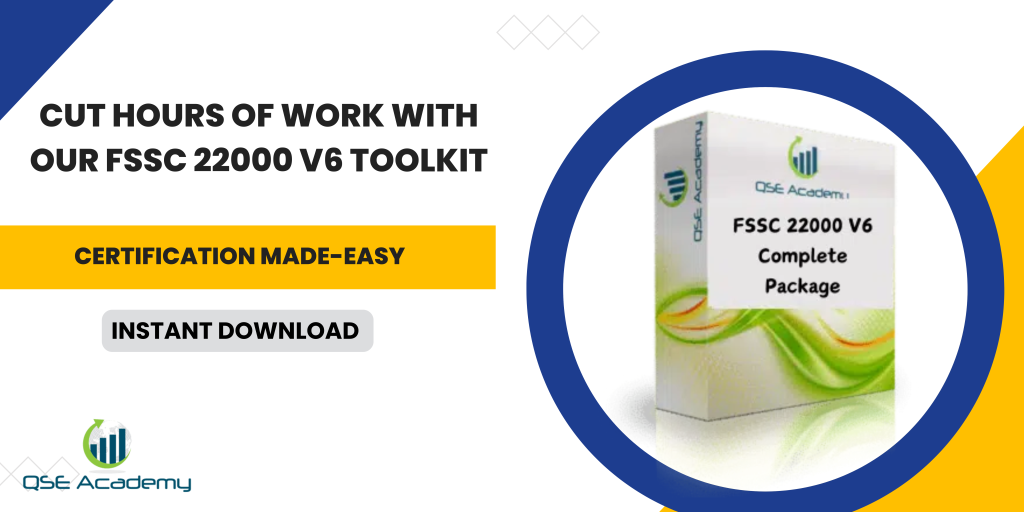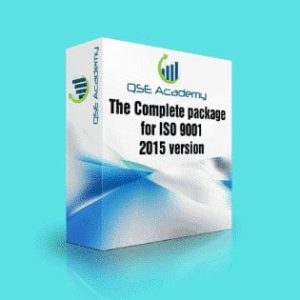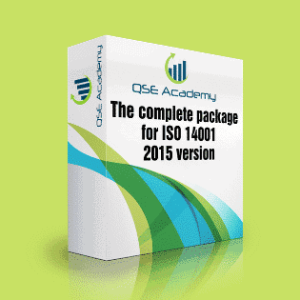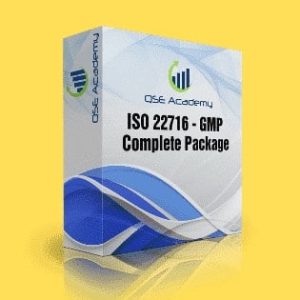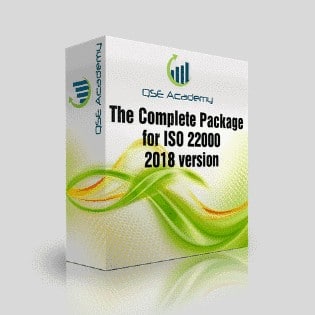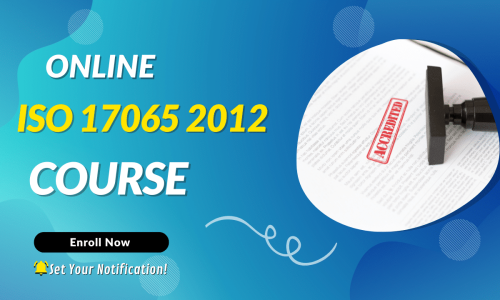FSSC 22000 V6 PRP & OPRP Record Templates
FSSC 22000 V6 PRP & OPRP Record Templates
Why PRP & OPRP Records Matter More Than Ever in FSSC 22000 V6
Every food business knows that procedures are critical — but it’s the records that prove control.
I’ve seen teams prepare thick binders of beautifully written SOPs only to stumble during audits because their records were inconsistent, incomplete, or missing signatures. That’s the difference between “documented” and “implemented.”
Under FSSC 22000 V6, maintaining structured PRP (Prerequisite Program) and OPRP (Operational Prerequisite Program) records isn’t optional — it’s essential. They form the evidence trail that your food-safety system actually works in real time.
In this article, we’ll break down exactly what PRP and OPRP records should include, how to format them for FSSC 22000 compliance, and how to access ready-to-use templates that save hours of setup time.
The Role of PRPs & OPRPs in FSSC 22000 V6
Here’s how I explain it during training: PRPs keep your environment safe; OPRPs keep your process under control.
- PRPs are your foundation — sanitation, pest control, supplier approval, personnel hygiene. They ensure the conditions are right for safe production.
- OPRPs are those extra control points where significant hazards exist but don’t qualify as full CCPs.
Together, they form your defense-in-depth system under ISO 22000 Clause 8.5.
Pro Tip: Always maintain a central PRP–OPRP Record Index. It links every monitoring log and verification record to its procedure and process step. Auditors can trace everything in seconds.
Common pitfall: Mixing up PRP, OPRP, and CCP records in the same folder. It confuses auditors and often leads to findings like “control category not clearly defined.” Keep them separate but cross-referenced.
 Essential PRP Record Templates (Daily & Periodic Logs)
Essential PRP Record Templates (Daily & Periodic Logs)
A PRP record proves you’re maintaining hygienic conditions day in and day out. Here are the key ones every food business should have:
| Record Type | Purpose | Key Fields | Frequency |
|---|---|---|---|
| Cleaning & Sanitation Log | Confirms cleaning is done correctly | Date, Area, Chemical Used, Verified By | Daily / Shiftly |
| Pest Control Record | Tracks monitoring and corrective actions | Trap ID, Findings, Action Taken | Weekly / Monthly |
| Equipment Maintenance Record | Confirms preventive maintenance | Equipment ID, Work Order, Signature | Scheduled |
| Supplier Approval Form | Demonstrates supplier risk control | Supplier, Risk Rating, Audit Date | Annual / Onboarding |
| Personnel Hygiene Checklist | Monitors compliance with hygiene rules | PPE Check, Hand Wash Record | Per Shift |
Pro Tip: Include verification initials for each record. It proves oversight and control.
Example: A beverage processor introduced a “sanitation verification signature” column. Within a month, hygiene nonconformities dropped by 40% — because supervisors had a clear accountability step.
Common mistake: Leaving these forms scattered across departments. Always maintain a single folder or digital index for all PRP records.
OPRP Monitoring Record Templates
While PRPs focus on environment, OPRPs monitor key process controls that reduce specific hazards to acceptable levels.
Here are the most common OPRP records used in food manufacturing:
- Metal Detector Monitoring Sheet — For detection integrity tests
- Sieving & Filtration Record — For physical contamination control
- Temperature Monitoring Log — For cooking, pasteurization, or chilling steps
- Allergen Control Checklist — For segregation and cleaning validation
- Water Treatment Verification Log — For water safety parameters
Each OPRP record should clearly show:
- Process step and equipment ID
- Measured parameter (e.g., time, temperature, flow rate)
- Target limits and acceptable range
- Monitoring frequency
- Operator initials and verification signature
- Corrective actions for deviations
Pro Tip: Build digital forms with conditional formatting — when a reading goes out of range, the cell highlights automatically.
Example: A sauce manufacturer set automatic alerts on their Excel OPRP log for temperatures outside 90–95 °C. It cut response time to potential deviations by 80%.
Verification & Record Review Procedures
Filling out records isn’t enough. FSSC 22000 requires review and verification of those records to confirm control effectiveness.
That means:
- Supervisors or QA must sign off on every log.
- Deviations must be closed with documented corrective actions.
- Records should feed into management reviews and trend analysis.
Actionable tip: Add a “Verified By / Date” column on every record. It’s a simple addition that shows active management involvement.
Pro Tip: Use verification data in your KPIs. Track things like “% of PRP activities completed on schedule” or “number of OPRP deviations this month.” These insights strengthen your continuous-improvement process.
Common pitfall: Reviewing records only before audits. Verification should be routine, not reactive.
Digital vs. Paper Record Templates — Which Works Best?
I get this question often. The short answer: it depends on your operation size and resources.
- Digital forms: Ideal for multi-site or high-volume operations. You get traceability, trend charts, and real-time alerts.
- Paper forms: Easier for small facilities without automation. Just make sure they’re legible, signed, and archived properly.
- Hybrid system: Common in mid-sized companies — paper logs for operators, digital backups for QA.
Example: A dairy plant moved from handwritten temperature logs to Excel-based OPRP forms. QA saved over three hours weekly on data entry and trend reporting.
Pro Tip: If you go digital, protect files with restricted editing and automatic backups. FSSC auditors will check your version control.
Maintaining Record Retention & Traceability
Records don’t just prove compliance today — they protect you tomorrow.
Under FSSC 22000 V6, keep all records for at least one year after the product’s shelf life or per local regulations.
Actionable step: Create a Record Retention Matrix listing each record type, retention period, and storage location. For example:
PRP-REC-01 Cleaning Log — Retain 3 years — Stored: QA Drive / Sanitation Folder
Pro Tip: Always log the destruction or archiving date for old records. It demonstrates control and prevents accidental data loss.
Common mistake: Losing track of who maintains the records. Assign ownership — QA for PRPs, production for OPRPs, with management oversight.
Benefits of Using Standardized Record Templates
Structured record templates do more than save time — they build system discipline.
Here’s what standardized forms achieve:
- Every required data point is captured consistently.
- Staff understand exactly how to fill forms.
- Auditors can trace any control measure instantly.
- Data trends become easier to review and improve.
Example: A snack manufacturer switched to QSE Academy’s standardized PRP templates. Within one audit cycle, their nonconformities dropped by 70%. The lead auditor commented that the records were “impressively complete and traceable.”
Pro Tip: Don’t reinvent the wheel. Start from proven templates and adapt them to your process.
FAQs — PRP & OPRP Record Keeping Under FSSC 22000 V6
Q1. Are PRP records mandatory under FSSC 22000 V6?
Yes. PRP implementation must be supported by completed, reviewed, and traceable records — it’s one of the first things auditors ask for.
Q2. How often should records be verified?
Daily for PRPs that protect hygiene (like sanitation), and at defined monitoring frequencies for OPRPs (like temperature checks).
Q3. Can old paper records be scanned and stored digitally?
Yes — digital archives are acceptable as long as they’re readable, secure, and easily retrievable.
Conclusion — Download Your FSSC 22000 V6 PRP & OPRP Record Templates
Records are the heartbeat of your food-safety system. They don’t just prove compliance — they prove control, consistency, and culture.
At QSE Academy, we’ve developed ready-to-use FSSC 22000 V6 PRP & OPRP Record Templates — available in Excel or printable formats. They’re structured for compliance, built for speed, and trusted by hundreds of certified sites worldwide.
Melissa Lavaro is a seasoned ISO consultant and an enthusiastic advocate for quality management standards. With a rich experience in conducting audits and providing consultancy services, Melissa specializes in helping organizations implement and adapt to ISO standards. Her passion for quality management is evident in her hands-on approach and deep understanding of the regulatory frameworks. Melissa’s expertise and energetic commitment make her a sought-after consultant, dedicated to elevating organizational compliance and performance through practical, insightful guidance.

